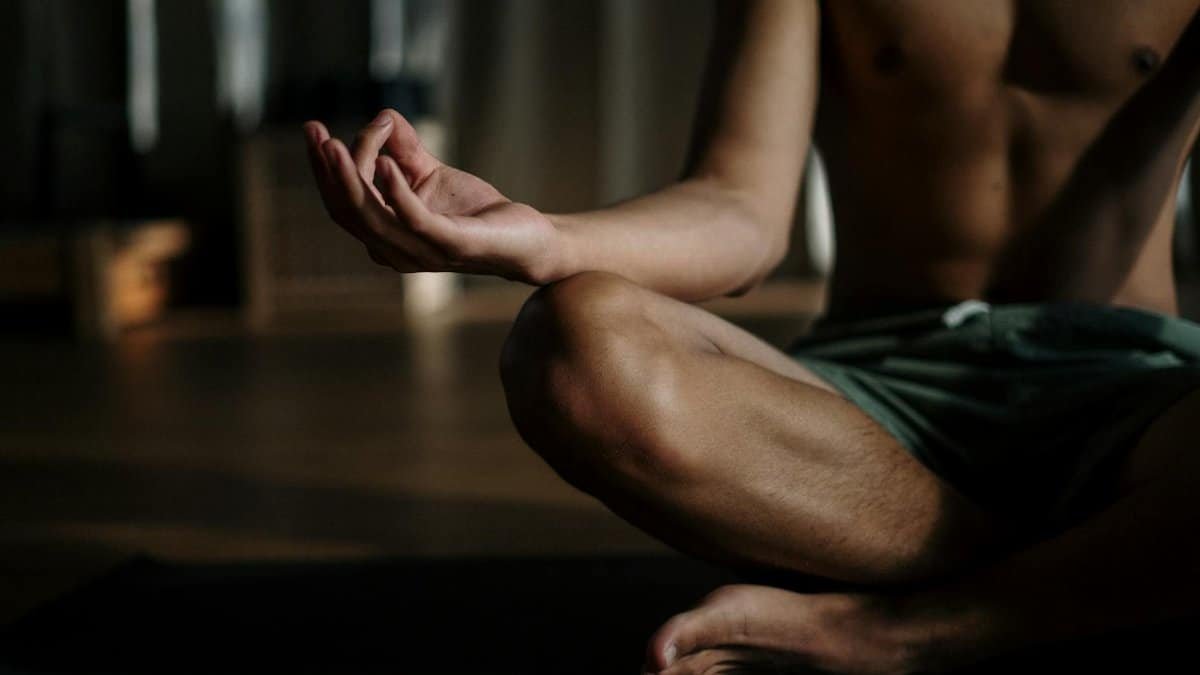Walk down any street in bustling cities like New York or Los Angeles these days, and you’ll spot people weaving yoga routines into their daily lives, from quick park sessions to studio classes that promise a break from the grind. This surge isn’t just a fad; it’s a response to the mounting stress of modern existence, where work demands and digital overload leave many yearning for calm. As Americans navigate the pressures of 2025, with economic uncertainties and constant connectivity amplifying anxiety, yoga routines offer a grounded way to reclaim peace. Rooted in ancient practices but adapted for today’s fast pace, these routines focus on breath, movement, and mindfulness to dissolve tension. What started as a niche wellness trend has become mainstream, with millions turning to poses that soothe the mind and body. This article explores eight such routines, each designed for relaxation, highlighting how they can fit into everyday life to ease the burdens we all carry.
1. Child’s Pose: A Gentle Start to Unwinding
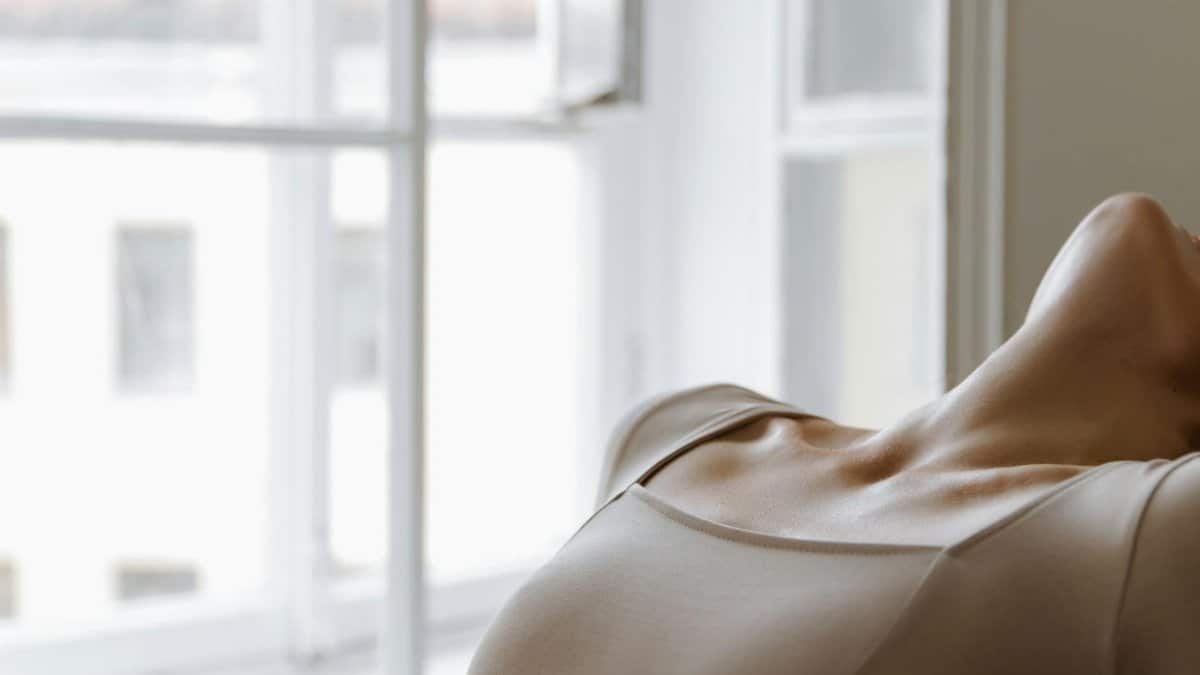
Begin with something simple, a pose that invites surrender right from the outset. Child’s Pose, or Balasana, asks you to kneel on the mat, fold forward, and rest your forehead on the ground, arms extended or relaxed by your sides. It’s like curling into a protective shell, shielding you from the world’s chaos. Hold it for a minute or two, breathing deeply into your back, and feel the stretch in your hips and spine. This routine eases mental clutter, much like how one middle-aged professional in Chicago described it during a community wellness talk: “It’s my reset button after a long day of meetings.” Studies back this up; research from the National Institutes of Health shows yoga practices like this reduce cortisol levels, the hormone tied to stress. For deeper insight, check the NIH study on yoga and stress reduction. In 2025, as remote work blurs boundaries, incorporating this into evenings can signal the end of productivity mode, transitioning to rest. Vary it by widening your knees for a broader hip opening, or use a bolster for support if flexibility is an issue. The beauty lies in its accessibility—no fancy equipment needed, just a quiet corner and intention.
Imagine a harried parent sneaking in this pose while dinner simmers. The breath slows, thoughts quiet. It’s not about perfection; it’s about presence. Over time, regular practice builds resilience against daily irritants, fostering a calmer baseline. Yet, some find the forward fold initially uncomfortable, revealing hidden tensions in the body. That’s the point—acknowledging and releasing them gently.
2. Legs-Up-the-Wall: Inverting Stress for Calm
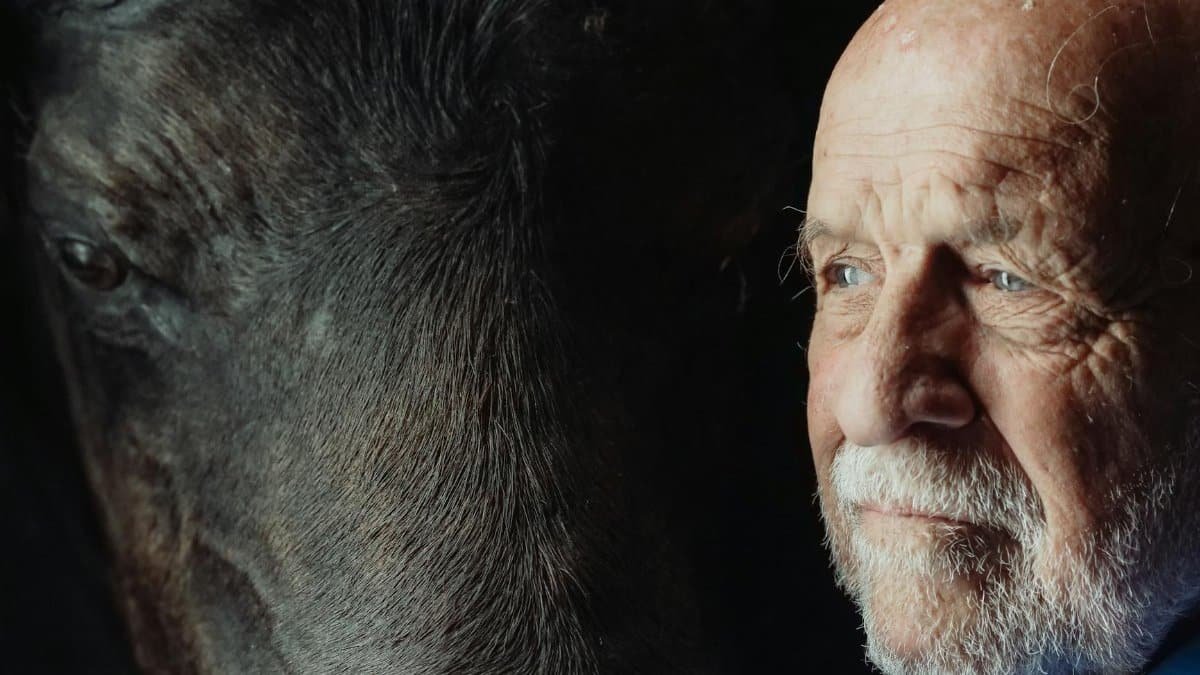
Picture flipping your perspective, quite literally. Legs-Up-the-Wall, known as Viparita Karani, involves lying on your back with legs extended up against a wall, forming an L-shape. Stay there for five to ten minutes, eyes closed, letting gravity do the work. This inversion drains fatigue from the legs, improves circulation, and calms the nervous system. It’s particularly soothing after hours on your feet or glued to a screen, countering the sedentary slump many face in office jobs.
A recent account shared in online wellness circles captured it well: someone described feeling “like all the day’s weight lifted off my shoulders” after trying it during a lunch break. Evidence supports such experiences; a Harvard Medical School guide notes how restorative poses like this activate the parasympathetic response, promoting relaxation. Explore more in the Harvard guide on the relaxation response. In our era of constant alerts, this routine serves as a digital detox, encouraging disconnection. Adapt it with a folded blanket under your hips for comfort, or add soft music to enhance the meditative quality. The shift is subtle yet profound, often leading to better sleep when done before bed.
Challenges arise if wall space is limited, but a door or couch works too. It’s a reminder that relaxation doesn’t require grand gestures—small inversions can realign your inner world.
3. Corpse Pose: Embracing Stillness in Savasana
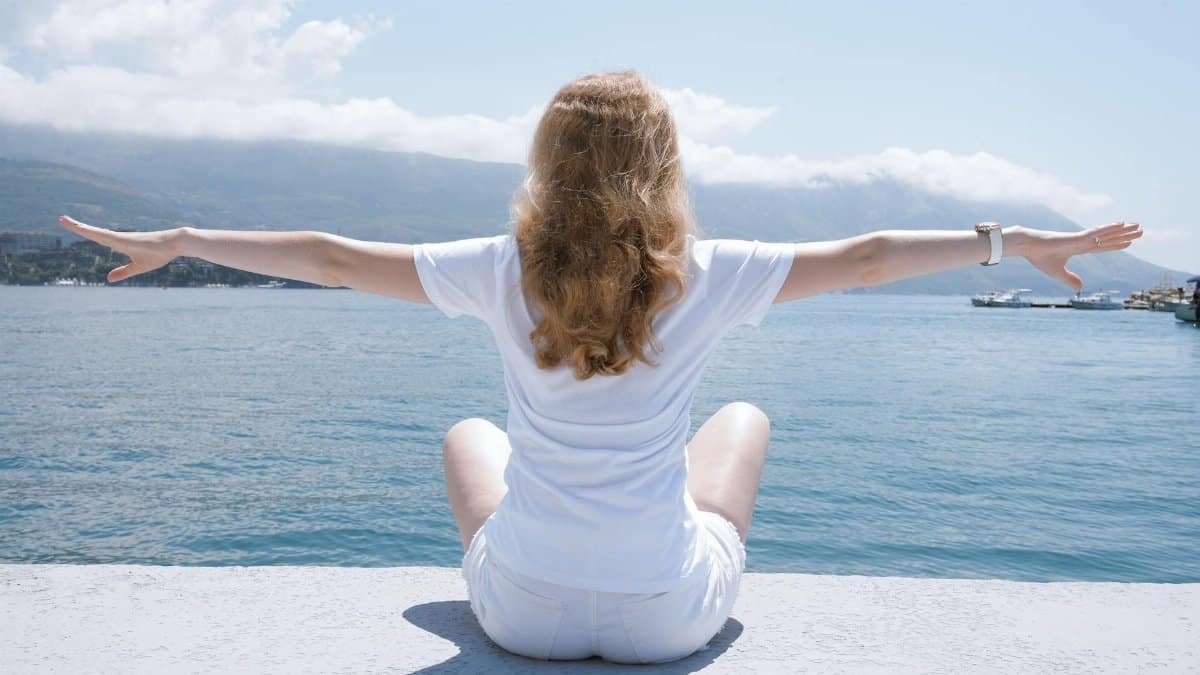
Sometimes, the most powerful routine is the one that asks for nothing. Corpse Pose, or Savasana, simply requires lying flat on your back, limbs relaxed, palms up, and eyes closed. Focus on your breath for ten minutes, scanning the body for tension and letting it melt away. This final relaxation in many yoga classes integrates the benefits of movement, but it stands alone as a potent tool for unwinding.
Think of it as a mini-vacation from life’s demands. One observer at a community center in Austin noted groups emerging from Savasana looking refreshed, as if they’d napped for hours. Scientific backing comes from the American Psychological Association, which links mindfulness practices like this to reduced anxiety. Dive into their findings via the APA on mindfulness and meditation. As 2025 brings evolving work-life balances, this pose teaches the art of doing less, countering hustle culture. Enhance it with guided audio if your mind wanders, or practice in nature for added serenity.
Yet, stillness can feel elusive at first, with thoughts racing. That’s normal; persistence turns it into a sanctuary.
4. Cat-Cow Pose: Flowing to Ease Tension
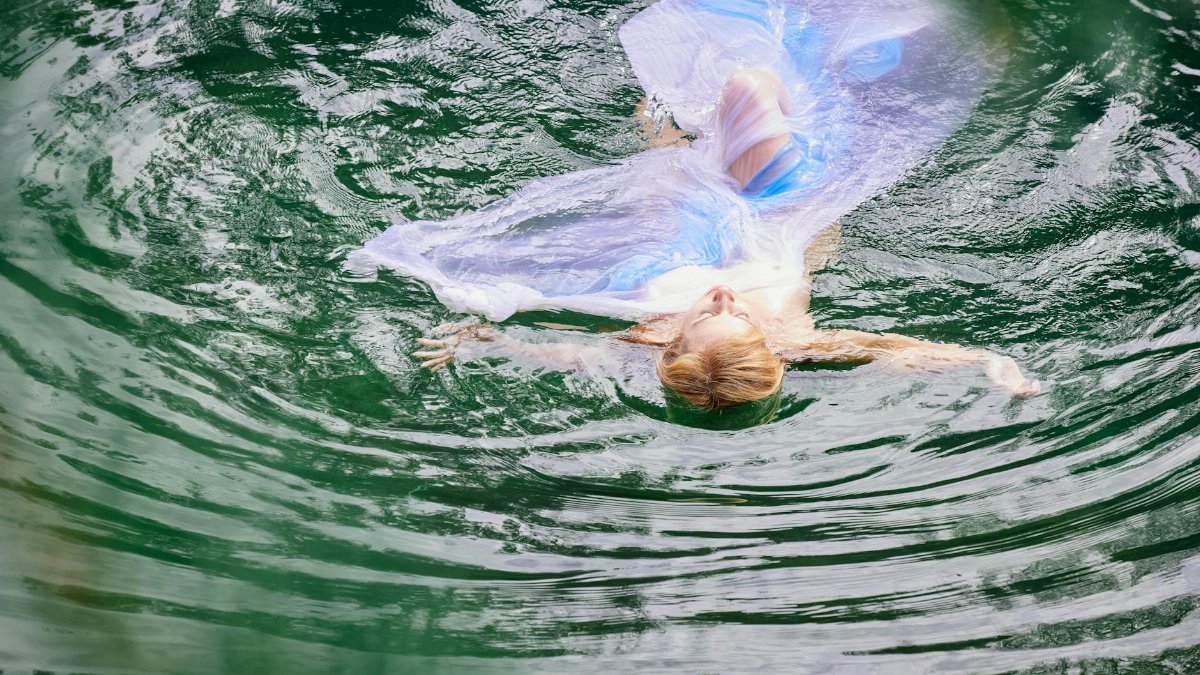
Moving with intention can dissolve knots you didn’t know were there. Cat-Cow Pose, or Marjaryasana-Bitilasana, eases tension through rhythmic spinal flows. Start on all fours, inhale to arch your back (Cow), lifting your head and tailbone, then exhale to round it (Cat), tucking chin and tail. Repeat for a few minutes, syncing with breath. This dynamic routine massages the spine, releases shoulder tightness, and calms the mind by linking movement to respiration.
In a bustling world, it’s like waving a white flag to built-up stress. A participant in a virtual class recounted how it “melted away the day’s frustrations,” highlighting its immediate impact. The Mayo Clinic affirms yoga’s role in tension relief, with poses like this improving flexibility and mood. Learn more from the Mayo Clinic on yoga for stress. Especially relevant in 2025, amid ongoing hybrid work strains, this flow fits into short breaks. Modify by staying seated if knees protest, focusing on the undulating spine.
The back-and-forth mimics life’s ebbs and flows, teaching acceptance. Over sessions, it builds body awareness, preventing tension from accumulating.
5. Seated Forward Bend: Folding into Release
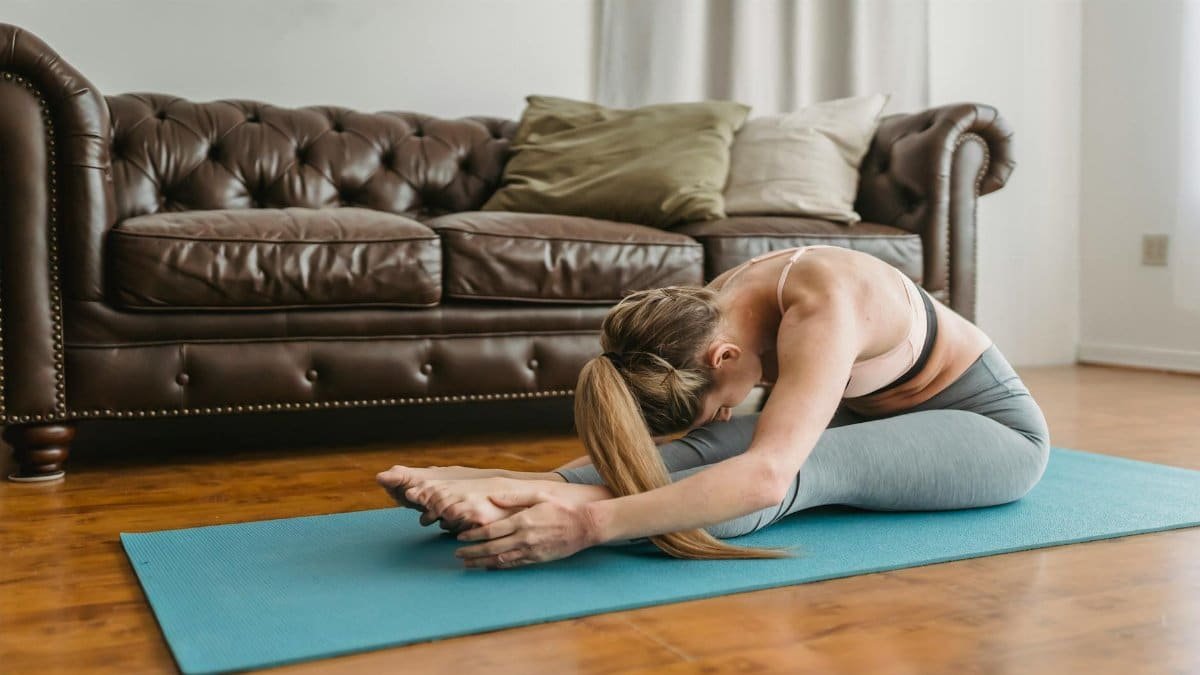
Delve deeper with a fold that targets the hamstrings and back. Seated Forward Bend, or Paschimottanasana, has you sit with legs extended, then hinge at the hips to reach toward your feet, holding for 30 seconds to a minute. It stretches the posterior chain, easing lower back tension while encouraging introspection as you bow inward.
It’s a pose that whispers patience, ideal for those desk-bound days. An anonymized story from wellness forums described a breakthrough: “After weeks, I felt the tightness give way, and with it, my worries.” Research from the Journal of Alternative and Complementary Medicine supports yoga’s anxiety-reducing effects. For details, see the study on yoga for anxiety. In today’s climate, this routine grounds you amid uncertainty. Use a strap if reach is limited, emphasizing breath over depth.
Resistance might surface emotionally, but that’s where growth happens—unfolding layers of stress.
6. Supine Spinal Twist: Twisting Out the Day’s Knots
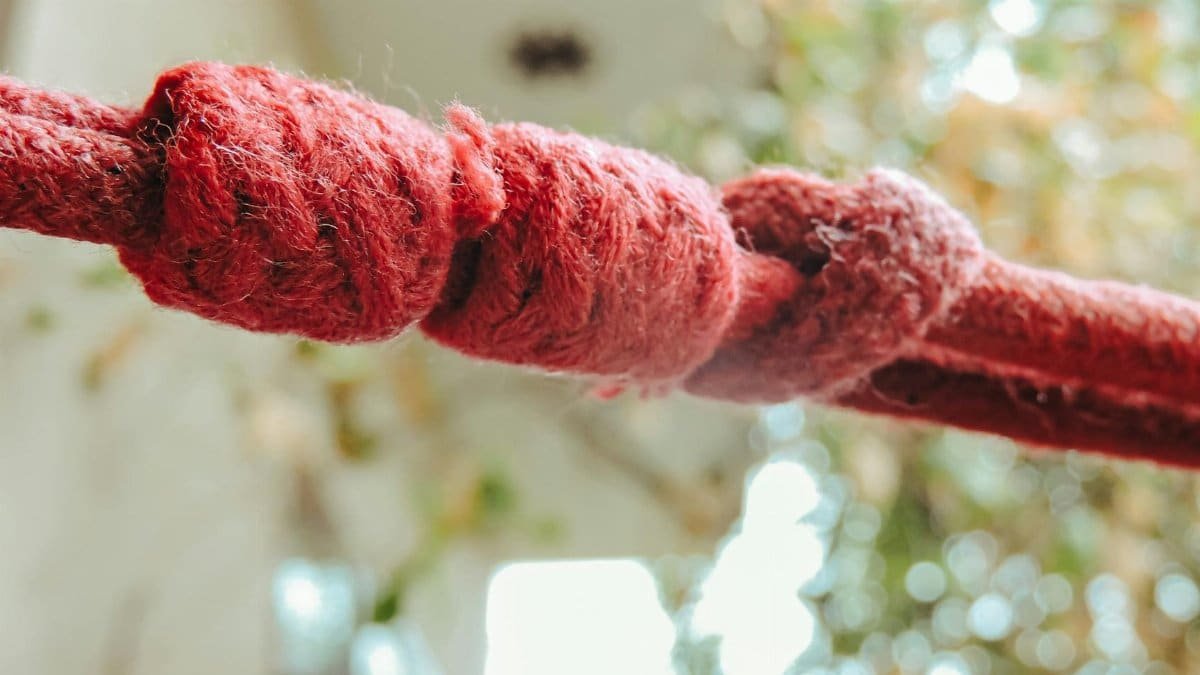
Twists offer a fresh angle on relaxation. Supine Spinal Twist involves lying on your back, drawing one knee across the body while turning your head opposite, holding each side for a minute. It wrings out the spine, aids digestion, and releases hip tension, promoting a sense of renewal.
Like squeezing a sponge, it expels accumulated stress. A group in Seattle’s yoga scene shared how it became their go-to for evening wind-downs. The CDC notes physical activity like yoga improves mental health; explore their resources at CDC on stress coping. Adapt for comfort with props, making it inclusive.
This routine highlights yoga’s adaptability, turning simple movements into profound relief.
7. Butterfly Pose: Opening Hips and Heart
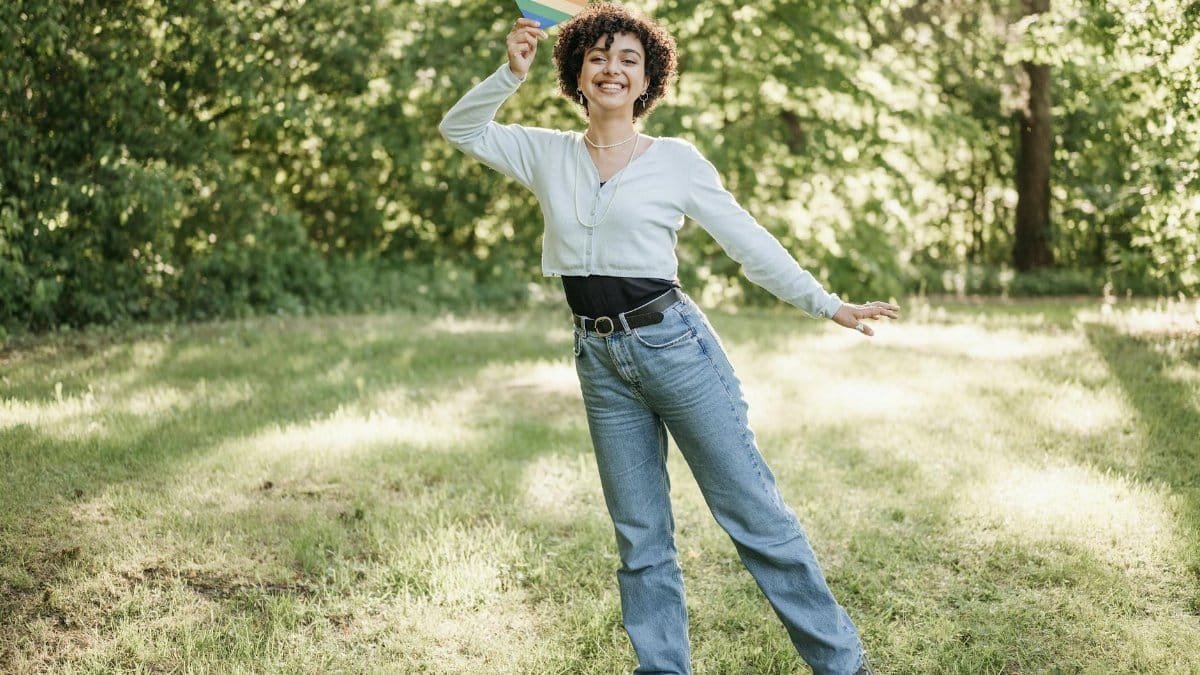
Open up with Butterfly Pose, or Baddha Konasana, sitting with soles of feet together, knees out, gently pressing down. Hold and breathe, perhaps folding forward. It targets inner thighs and hips, areas that harbor emotional tension, fostering openness.
It’s nurturing, like a self-hug. Reflections from practitioners emphasize its calming effect. Pew Research on wellness trends underscores rising yoga participation; see Pew on wellness trends (note: while not directly yoga, it ties to broader health shifts). This fits 2025’s self-care focus.
Patience transforms tightness into ease.
8. Guided Breathing in Easy Pose: The Breath as Anchor
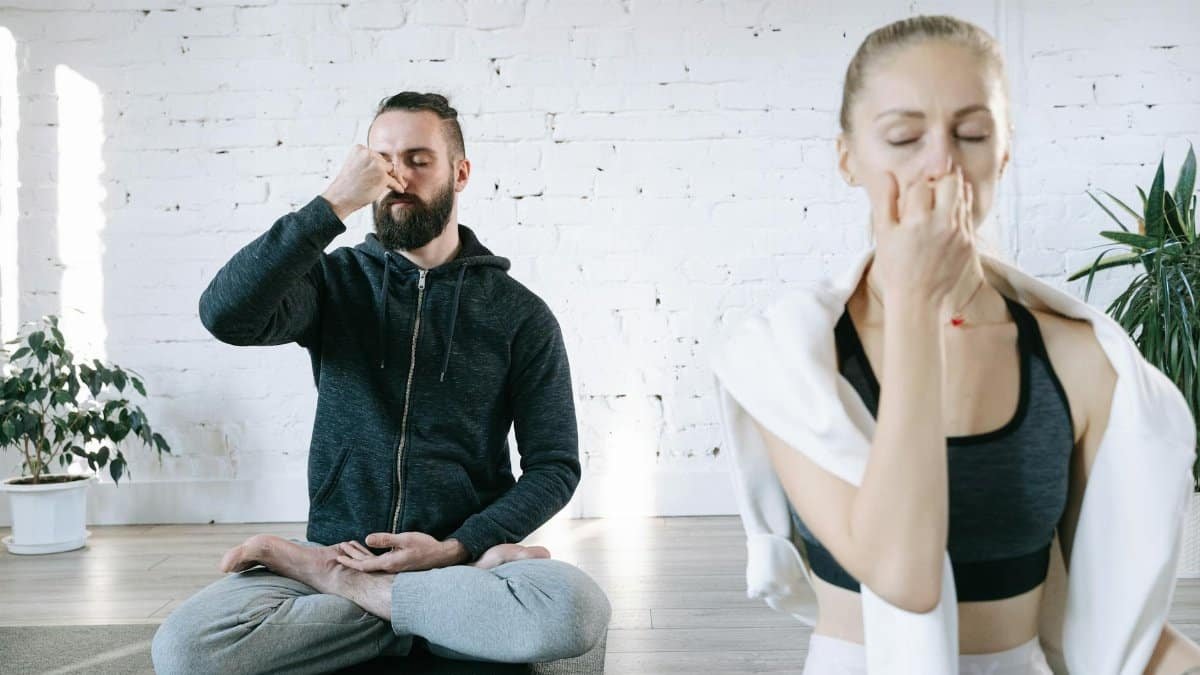
End with breath, the core of all yoga routines. In Easy Pose, or Sukhasana, sit cross-legged, hands on knees, and practice alternate nostril breathing or simple deep inhales. Five minutes can shift your state, anchoring you in the present.
Breathwork is transformative, as one anonymous sharer noted: “It quiets the inner storm.” NIH studies link it to reduced blood pressure; reference NIH on blood pressure management. This routine encapsulates yoga’s essence, accessible anytime.
Incorporate it daily for lasting calm, weaving relaxation into life’s fabric.
